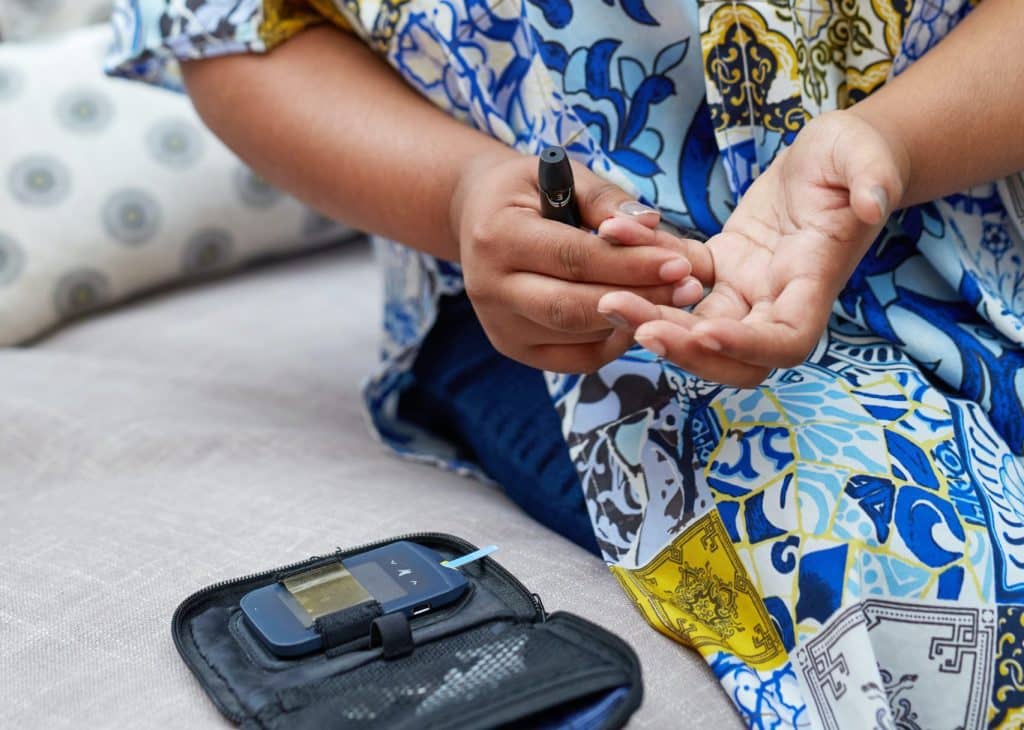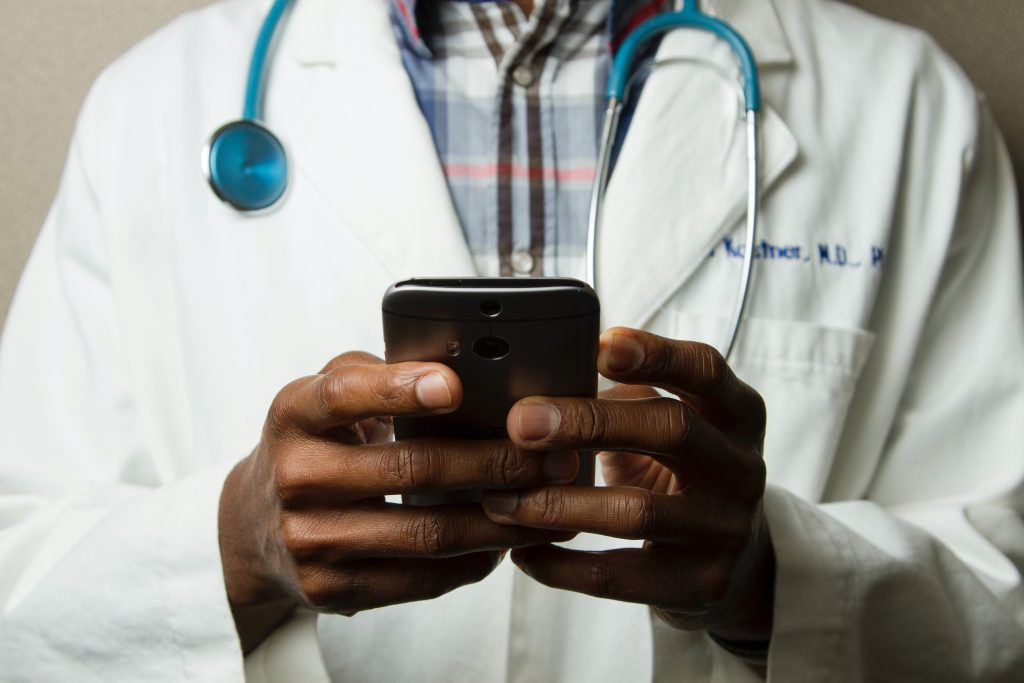Adverts
Glucose monitoring plays a crucial role in managing diabetes, a metabolic condition characterized by high blood glucose levels. This practice is essential to evaluate the effectiveness of treatment, adjust the diet, administer medications and prevent long-term complications. Diabetes demands careful management, as fluctuations in glucose levels can result in adverse symptoms, from fatigue to serious complications such as heart disease and nerve damage.
Regular monitoring provides patients and healthcare professionals with real-time information about their glycemic profile, allowing for precise adjustments to treatment strategies. With technological evolution, applications for measuring glucose have become essential allies, providing a more accessible and convenient approach to continuous monitoring, potentially improving quality of life and promoting more effective control of the condition.
See what you will find in this article:
What is diabetes?
Diabetes is a chronic health condition that occurs when the body cannot produce enough insulin or cannot effectively use the insulin it produces. Insulin is an essential hormone for controlling blood sugar (glucose), as it facilitates the entry of cells so that they can use glucose as a source of energy. When this process is compromised, blood glucose levels can become high, resulting in health complications.

There are two main types of diabetes:
- Type 1 Diabetes: Usually diagnosed at a younger age, it occurs when the immune system attacks and destroys the beta cells in the pancreas, responsible for producing insulin. As a result, people with type 1 diabetes need insulin to control their glucose levels.
- Type 2 diabetes: Most common in adults, although it can also occur in children and adolescents, type 2 diabetes is associated with insulin resistance and the body's inability to produce enough insulin to meet its needs. Factors such as obesity, lack of physical activity and genetic predisposition are associated with the development of type 2 diabetes.
Common symptoms of diabetes include increased thirst, increased hunger, unexplained weight loss, fatigue, blurred vision, and slow wound healing. Effective diabetes control involves a combination of regular glucose monitoring, a healthy diet, physical activity and, in some cases, medication or insulin. Failure to properly treat diabetes can lead to serious complications such as heart disease, nerve damage, kidney problems and vision loss. Proper management, however, allows many people with diabetes to lead healthy, active lives.
The growing role of apps in diabetes management
The growing role of app technology in diabetes management has significantly transformed the management of this chronic condition. Apps offer an innovative and accessible approach to monitoring, analyzing and improving diabetes management. Here are some highlights of this growing impact:
- Real-time monitoring:
- Glucose monitoring apps give users the ability to track glucose levels in real time. This allows for an immediate understanding of glycemic variations, facilitating quick adjustments in treatment strategies;
- Ease of Registration:
- Apps simplify the process of recording diabetes-related data, such as glucose levels, dietary intake and physical activity. This facility promotes more consistent adherence to monitoring, providing a comprehensive view of lifestyle and its influence on glucose levels;
- Integration with continuous monitoring devices:
- Many apps integrate with continuous monitoring devices, allowing users to view and analyze detailed data about their glycemic profiles over time. This integration offers a deeper understanding of glycemic patterns;
- Customized reminders and alerts:
- Apps can send reminders for glucose measurement, medication administration and meal tracking. These personalized reminders help you maintain consistency in your self-care practices;
- Analysis of trends and patterns:
- The ability to analyze data over time allows apps to identify trends and patterns in glucose levels. This analysis contributes to a more holistic understanding of the condition and helps in making informed decisions about treatment;
- Communication with healthcare professionals:
- Many apps facilitate direct communication between patients and healthcare professionals. This enables real-time data sharing, allowing for more precise adjustments to the treatment plan;
- Education and ongoing support:
- In addition to monitoring, apps often offer educational resources, nutritional tips, and emotional support. These elements add an educational and motivational dimension to diabetes management;
- Artificial intelligence and prediction:
- Some apps incorporate artificial intelligence to predict future glycemic patterns based on historical data. This functionality can improve the anticipation of critical events and guide preventive treatment adjustments.
How apps work to measure glucose
Applications for measuring glucose operate through advanced technologies, especially image recognition and real-time data processing. These apps use mobile device cameras to capture images of test strips or glucose measuring devices. Using sophisticated image processing algorithms, these applications analyze specific visual characteristics on test strips or other measuring instruments.

Pattern recognition plays a crucial role, allowing the app to identify relevant areas in images, such as test areas on glucose strips. The algorithm interprets visual information to extract numerical values related to glucose levels. Some apps also incorporate machine learning to improve their accuracy over time. This means that as more data is provided and the app receives feedback on its analyses, it becomes better at identifying and interpreting results.
It is important to note that the accuracy of these applications may be affected by external factors such as inadequate lighting or image quality. However, the constant evolution of these technologies aims to improve the reliability and effectiveness of glucose measurement applications without the need for specific lists.
Top 5 apps to measure glucose
- MySugr (Android It is iOS):
- Recognized as one of the most popular apps for glucose monitoring and diabetes management, MySugr enables users to record glucose readings, insulin doses, diet and physical activity. Furthermore, it stands out for its data analysis feature, which identifies trends and patterns in glycemic levels. MySugr also provides information on estimating HbA1c, an indicator of long-term glucose control. Its relaxed approach helps make glucose monitoring more enjoyable.
- One Drop (Android It is iOS):
- Admired for its simplicity and user-friendly design, One Drop is a glucose measurement app that allows you to record readings, medications, food and physical activity. Its unique feature is its data-driven coaching feature, offering personalized insights to improve glycemic control. The app also provides an online community for users to connect and share experiences.
- Glooko (Android It is iOS):
- Glooko offers a comprehensive platform that allows users to synchronize data from multiple glucose meters and CGMs. With detailed graphs and reports, the application allows you to record food, insulin and physical activity. It stands out for its ability to share data with doctors and healthcare professionals, facilitating collaboration in treatment. Additionally, it provides support for both type 1 and type 2 diabetes patients.
- Sugarmate (iOS):
- Specifically designed for Dexcom CGM device users, Sugarmate integrates seamlessly with Dexcom continuous glucose monitoring systems. Enables real-time viewing of glucose data on iPhone, offering notification features to alert you about glycemic trends, hypoglycemia or hyperglycemia events. The premium version of Sugarmate features advanced features such as trend reports and more personalized notifications.
- Glucose Buddy (Android It is iOS):
- As a free app, Glucose Buddy offers comprehensive glucose logging and tracking features. Users can record glucose, insulin, food and physical activity readings, generating detailed graphs and reports. The ease of sharing data with doctors and family members is a valuable feature. Glucose Buddy is intuitive and supports most glucose meters available on the market.
Did you like this content?
Now that you are familiar with the main app options for measuring glucose, it is crucial to remember that, regardless of the app you choose, these tools are complementary to managing diabetes and should not replace guidance from healthcare professionals. Close collaboration with physicians is critical to establishing a personalized and effective care plan.
Try different apps to find the one that best suits your individual needs. Share your experiences with friends and family, encouraging exploration of these innovative tools for diabetes care. Always remember that even with the help of these apps, ongoing collaboration with healthcare professionals is critical to effective and comprehensive diabetes management.




